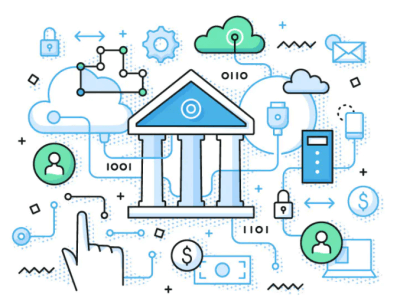World of Data Series Part 2: 4 Steps to Better Manage Your Business Data

Ensuring a balanced flow of data between business applications, sources, and warehouses is critical to delivering value from data resources.
Gathering, managing, integrating, and analyzing your unique business data needs to become a core competency for your organization. It's important to establish goals for implementation, develop a flexible plan, and put it into action.
There are four key steps to sustainably manage your business' data:
- Define clear data goals
- Identify relevant business data
- Recognize and utilize existing data technology
- Plan for changes in data and technology
Let's walk through the actions that should be taken to ensure you can properly manage your organization's data.
-
Define clear data goals
We all know that beginning with the end is mind is critical to success, but how does an organization go about defining their data goals? And what does it mean to have data goals? Data goals are essentially the strategy you define that helps your organization meet its business objectives through data. Examine your organization's business goals and recognize what data is required to enable those objectives. How can you utilize the data available to maximize its impact on the business?
The data strategy you define will impact all the actions taken on behalf of the company. The objectives you identify should also impact the timeline needed as well as justifications for additional expenses related to data activities, including not only hardware and software but also resources for managing the data.
-
Identify relevant business data
With a data strategy in place, examine all the data required to achieve your goals. Based on that data, what policies and procedures are required to manage it? Time and resources will be used to collect this data, so you want to ensure that the data is handled properly to be of most use to the organization.
Does your data exist in operational or transactional systems? Does it come from social media? Are there peripheral IoT devices such as scanners and sensors where your data resides? Do you collect data from smart devices such as phones and tablets?
Your data may come from one or more of these sources, but what matters most is that you recognize the purpose of that data and how it can be used. Having relevant business data is critical to addressing the goals of your organization.
-
Recognize and utilize existing data technology
Once the data strategy is defined and the required business data is recognized, an organization must determine how to utilize all the data-centric technologies available to ensure a symmetrical flow of data. Gathering, managing, and analyzing data is a core competency that cannot be overlooked as a part of your overall data plan.
Indeed defines seven key competencies related to data management: analyzing data, navigating database software, maintaining data integrity, managing accounts and files, database design and planning, communication, and business acumen. It takes a highly skilled individual to navigate all the technology available and map it to your goals as well as your existing infrastructure.
An important aspect of managing and configuring your systems is data protection and ethics. In his 2009 paper Digital Ethics, Rafael Capurro defines this as “Digital ethics or information ethics in a broader sense deals with the impact of digital Information and Communication Technologies (ICT) on our societies and the environment at large."
In this age of information, it's important to consider how and why organizations use the data that they have. Not only do companies have a responsibility to protect their customer data, but they have an ethical responsibility to ensure that the data is used in a manner that promotes both the customers and the business' best interests.
Each organization's approach to technology will be specific to their needs and their existing infrastructure but planning and design must account for your business objectives, the data needed to achieve your goals, and it must consider the ethical use of data. By simplifying your access to disparate data systems, managing ethics in data becomes much easier.
-
Plan for changes in data and technology
Once you've addressed the preceding steps, an organization must consider the flexibility of the plan and whether it will be able to account for changes in data and technology as they occur. We discussed how data management skills cannot be overlooked, but what organizations must also understand is that these skills quickly become out of date.
To keep pace with new technologies, teams must stay on top of industry and professional publications and develop key relationships with organizations that monitor technology trends. A new technology can quickly disrupt your data management strategy, and it is critical that organizations work to maintain the latest knowledge around these topics. Businesses need to understand how their data is used now, as well as how likely it is to change over time. As new data and digital technologies become available, businesses need to plan and react to change.
As we can see from the rise in DataOps, flexibility and agility are critical to managing change. Monolithic solutions, or one-off integrations are resistant to change and don't scale…
Managing your data is no simple task, but by taking the correct actions it can be done successfully. Begin with the end and mind and adapt throughout the process, accounting for all the factors that impact your data, as well as the larger macro environment.
The most important consideration is to go into the process with all the information possible, so that the best decisions can be made along the way. Just as your business needs the data to function, you must understand the purpose and use of that data to provide value to the business.
Discover More
Reach out to CData's data connectivity experts to discover how to easily connect, integrate, and transform your data today.





